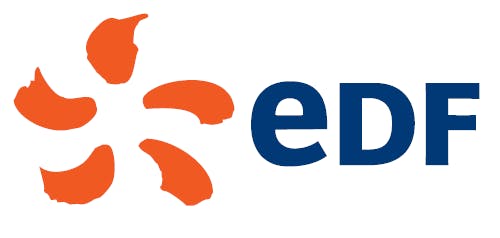3.1 Carbon neutrality and the climate
3.1.2 Adapting to climate change3.1.1.6.2 Group key performance indicator
GROUP KEY PERFORMANCE INDICATOR
EDF is working with SBTi on methodology to align the performance indicator with SB methodology.
In the meantime, the Impact Department has finalised an internal memorandum of application for all Group entities with the aim of establishing EDF group governance principles for carbon offsetting, more specifically carbon credit redemption. It also establishes reporting methods for entities using offsetting practices (reporting on Sustainable Development Committee (1)).
The Group has decided to use a “transitional KPI” between the end of 2021 and the end of 2023: the rollout rate for the guidance on carbon offsetting solutions within Group entities.
Deployment rate of the framework guidelines on carbon offsetting solutions (in %)

This graph shows the deployment rate of the framework guidelines on carbon offsetting solutions (in %).
2020 : -
2021 : 50
2022 : 50
Target 2023 : 100
3.1.1.6.3 Research and development
The EDF group R&D Division is implementing the Group’s strategy to achieve carbon neutrality by 2050. Based on an approach combining digital simulation and experimental resources, it evaluates the technical and economic maturity of CO2 emissions reduction solutions for industrial sources belonging to EDF and its customers and explores negative-emissions technologies:
3.1.1.6.3.1 CO2 capture and storage (CCS)
The EDF group has solid skills in this area, having participated in several international research projects and created a capture demonstrator at its Le Havre site. This €22 million demonstrator (25% co-funded by ADEME, i.e. the French Environmental & Energy Management Agency) has captured 1,900 tonnes of CO2.The research underway aims to adapt the post-combustion capture solution being tested at Le Havre (the most mature) for combined-cycle gas plants and industrial processes (cement works, steelworks, aluminium works), all of which have different smoke effluent characteristics. A CO2 Capture lab is currently under construction in Chatou; this will allow small-scale testing of the most appropriate capture procedures for these targets.
R&D is also examining the possibility of recovering the carbon dioxide captured in a different chemical form (e.g. fuels or materials). A laboratory to investigate CO2 recovery in the form of e-fuels is under construction at Renardières alongside the existing hydrogen platform.
3.1.1.6.3.2 Negative emissions, Bio-CCS and Direct Air Capture
Applied to bioenergy, CCS is becoming a way to generate negative CO2 emissions (BECCS) and could play a major role by 2050. EDF group R&D has begun initiatives to evaluate the potential of these technologies and adapt them to a range of industrial processes.
Techniques to capture CO2 from the atmosphere (Direct Air Capture, DAC) are seen as vital if the 1.5°C target is to be achieved by 2050. To progress in the understanding of these developing technologies, R&D draws on scientific partnerships and experimental methods. The Chatou CO2 capture lab will include a DAC technology test facility. In the United Kingdom, EDF Energy continuing to investigate setting up a direct air CO2 capture demonstrator on the site of the Sizewell C nuclear power plant project.
3.1.1.6.3.3 Solutions based on nature
Afforestation, reforestation, or proper management of pastures and wetlands now appear among the most promising potential ways to increase carbon storage in soil and forests, and accordingly generate negative emissions.
The EDF group is the third biggest land manager in France, with more than 40,000 hectares of land featuring not only production sites but extensive countryside (including 7,000 hectares of forests). To further enhance the position of the Company in this respect, R&D is working to evaluate the potential of the Group’s land resources for carbon storage, as well as the additional and temporal realities of offsetting actions and the synergies and potential contradictions between carbon offsetting and other ecosystem services, including the preservation of biodiversity.
3.1.2 Adapting to climate change
The climate change we are witnessing is unprecedented on such a short timescale. The average temperature of the planet has already increased by 1.1°C since 1750 (2). This global warming triggers the rise of sea levels and an increase (to varying degrees in different regions of the world) in the frequency and magnitude of natural disasters; it also contributes to an erosion of biodiversity worldwide. Climate risk is already a tangible reality, the effects of which will become more pronounced in the coming years.
EDF’s facilities have a technical lifespan potentially easily exceeding 40 years, making it, among non-nationalised companies, one of the major firms most exposed to the physical effects of climate change. This is why the EDF group identified climate risk as a priority in 2018.
Adapting to climate change refers to a procedure to adjust to the current climate, its changes, and its consequences. This means mitigating the harmful effects of climate change and making the most of any beneficial effects and resulting opportunities.
(1) See section 3.5.2 “CSR governance bodies”.
(2) Climate change 2021: scientific components. Contribution of Working Group I to the sixth assessment report of the French Intergovernmental Panel on Climate Change (IPCC), August 2021.
